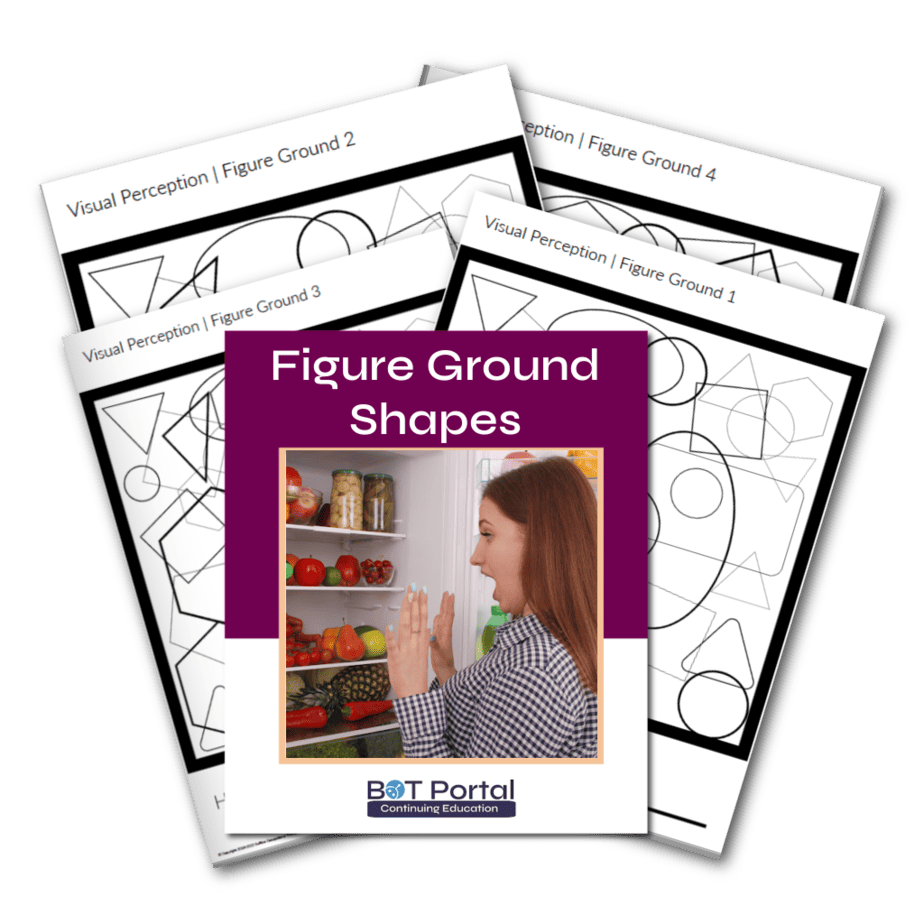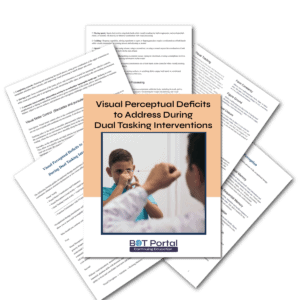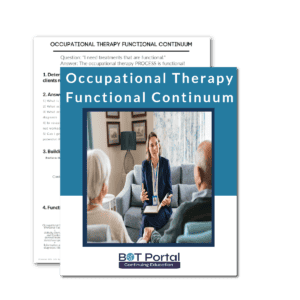Description
Figure-Ground Shapes
Visual Perception
Using a visual perception worksheet to improve visual discrimination will help to refine various skills and allow our patients to see overall improvement in life activities that require this figure-ground skills. There is a time and a place for worksheets and visual perception goals is the appropriate time to use this tool in your toolbox!
Description of Figure Ground Visual Perception Training using Shapes
Enhancing figure-ground visual perception skills and visual discrimination is a crucial aspect of occupational therapy, impacting individuals’ ability to effectively navigate their environment and engage in daily activities. Figure-ground perception refers to the ability to distinguish an object from its background, while visual discrimination involves the ability to perceive differences or similarities between objects. By targeting these skills, therapists aim to improve cognitive processing and enhance overall visual perception.
When individuals struggle with figure-ground perception, they may have difficulty locating objects in cluttered environments or distinguishing relevant information from distracting background stimuli. Visual discrimination deficits, on the other hand, can manifest as challenges in recognizing subtle differences in shapes, patterns, or colors.
In occupational therapy, worksheets featuring varying overlapping shapes serve as valuable tools for addressing these skills. These worksheets prompt individuals to identify and differentiate between different shapes, sizes, and orientations, helping to strengthen figure-ground perception and visual discrimination abilities.
But what brain areas are therapists targeting through these activities? The primary regions involved in figure-ground perception and visual discrimination include the occipital lobe, parietal lobe, and temporal lobe. The occipital lobe, located at the back of the brain, is responsible for processing visual information received from the eyes. It plays a crucial role in basic visual processing, such as detecting shapes and colors.
The parietal lobe is involved in spatial processing and attention, helping individuals to focus on relevant visual stimuli while filtering out distractions. It plays a key role in figure-ground perception by facilitating the segregation of objects from their backgrounds.
Additionally, the temporal lobe contributes to visual processing by recognizing and interpreting complex visual stimuli, such as faces and objects. It aids in visual discrimination by enabling individuals to perceive subtle differences in shapes, patterns, and textures.
By engaging individuals in activities that target figure-ground perception and visual discrimination, occupational therapists stimulate these brain regions, promoting neuroplasticity and improving overall visual perception. Through consistent practice and targeted interventions, individuals can enhance their ability to perceive and interpret visual information accurately, leading to improved performance in daily activities and enhanced quality of life.
What is included?
- 6 unique figure ground worksheets
Other helpful links:
Check out BOT Portal: Resource Site for Occupational Therapy Students and Practitioners




